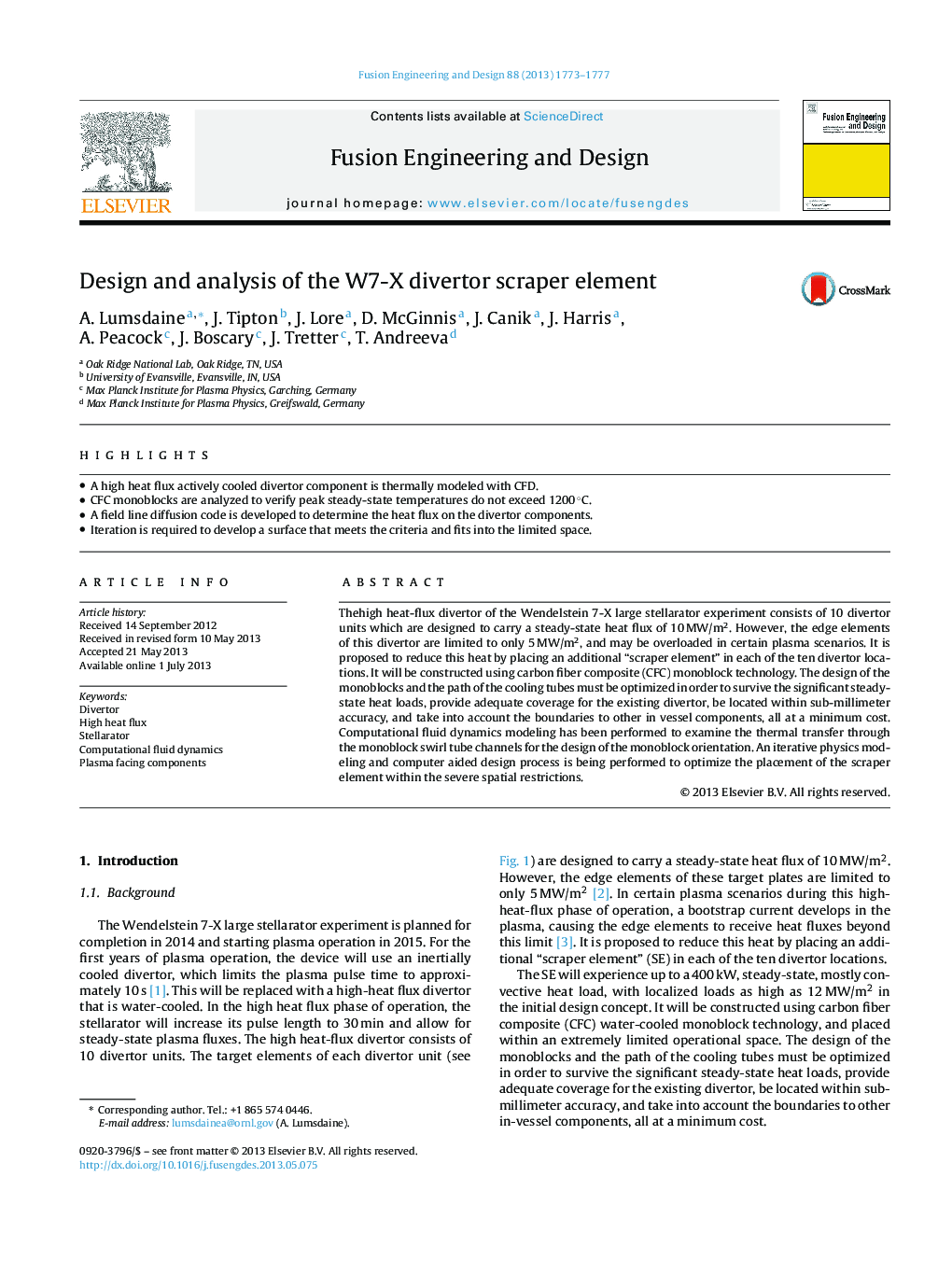| Article ID | Journal | Published Year | Pages | File Type |
|---|---|---|---|---|
| 6746421 | Fusion Engineering and Design | 2013 | 5 Pages |
Abstract
Thehigh heat-flux divertor of the Wendelstein 7-X large stellarator experiment consists of 10 divertor units which are designed to carry a steady-state heat flux of 10Â MW/m2. However, the edge elements of this divertor are limited to only 5Â MW/m2, and may be overloaded in certain plasma scenarios. It is proposed to reduce this heat by placing an additional “scraper element” in each of the ten divertor locations. It will be constructed using carbon fiber composite (CFC) monoblock technology. The design of the monoblocks and the path of the cooling tubes must be optimized in order to survive the significant steady-state heat loads, provide adequate coverage for the existing divertor, be located within sub-millimeter accuracy, and take into account the boundaries to other in vessel components, all at a minimum cost. Computational fluid dynamics modeling has been performed to examine the thermal transfer through the monoblock swirl tube channels for the design of the monoblock orientation. An iterative physics modeling and computer aided design process is being performed to optimize the placement of the scraper element within the severe spatial restrictions.
Related Topics
Physical Sciences and Engineering
Energy
Energy Engineering and Power Technology
Authors
A. Lumsdaine, J. Tipton, J. Lore, D. McGinnis, J. Canik, J. Harris, A. Peacock, J. Boscary, J. Tretter, T. Andreeva,
